#alpine hare
Explore tagged Tumblr posts
Photo
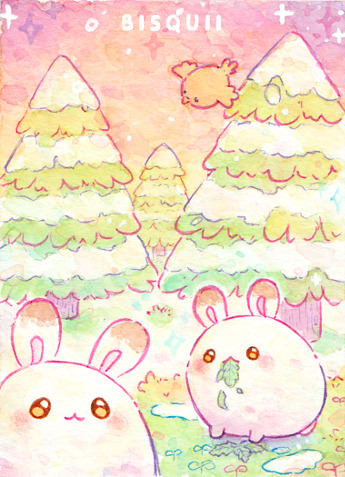
“A Patch of Spring” An ATC (artist trading card) that I've created for an art trade! ^^ This card features two "alpine hares" and was created with watercolors. The soft sunset helps me to create a warm atmosphere despite the the cold snow ♫ > Please do not repost, recreate, trace, edit or use my art, thanks~ :3
#alpine hare#watercolors#bunny#animal art#snow#winter#spring#pastel aesthetic#kawaii#painting#cute#traditional#drawing
537 notes
·
View notes
Text

A timid hare is cautiously listening to its surroundings.
Here it's as far from winter as it gets - and super hot - so obviously it's the perfect time to draw a snow bunny in its white winter coat! xD
This bunny is also available as all kinds of prints and merchandise on https://www.redbubble.com/shop/ap/161500944 if you want to take one home ^^
#hare#rabbit#bunny#snow hare#mountain hare#blue hare#white hare#tundra hare#variable hare#alpine hare#irish hare#my art
35 notes
·
View notes
Text

Mountain hare, also known as blue hare, tundra hare, variable hare, white hare, snow hare, alpine hare, and Irish hare, is a species of Palearctic hare that is largely adapted to polar and mountainous habitats.
This species is distributed from Fennoscandia to eastern Siberia; in addition, isolated mountain populations occur in the Alps, Scotland, the Baltics, northeastern Poland, and Hokkaidō. In Ireland, the Irish hare (L. t. hibernicus) lives on lowland pastures, coastal grasslands, and salt marshes, not just in the mountains. The mountain hare has also been introduced to Iceland, Shetland, Orkney, the Isle of Man, the Peak District, Svalbard, the Kerguelen Islands, the Crozet Islands, and the Faroe Islands. In the Alps, the mountain hare lives at elevations from 700 to 3,800 m (2,300 to 12,500 ft), depending on geographic region and season.
Instagram.com/karolwildlifephotography/
56 notes
·
View notes
Text
F1 Grid as Animals
Was drawing my leonin dnd character and he somehow ended up looking like Max, which obviously had me thinking about the whole Dutch Lion stuff, and then what animal I would associate with the other drivers based on looks, region, and personalities.
Max Vertsappen - Transvaal Lion (obvious reasons and Transvaal sometimes have a naturally have a lighter coat.)
Checo Perez - Chocolate Labrador (look friendly but are still considered a gun dog)
Daniel Ricciardo - Honey Badger (for obvious reasons but also they are know to take on and defend against lions in the wild)/Doberman or Beauceron with floppy ears (ears get snipped at Mclaren)
Yuki Tsunoda - Japanese Sparrowhawk (can be aggressive despite their smaller size. Great agility)
Liam Lawson - Bull Terrier (The look really similar, idk how to explain it)
Isack Hadjar - Striped Hyena
Carlos Sainz - Spanish Fighting Bull/Black Andalusian Horse
Charles Leclerc - Thoroughbred Horse/ European Hare
Lando Noriss - Irish Red Setter (again, a family friendly gun dog. Has the curls)
Oscar Piastri - Whistling Kite (not as aggressive as other birds of prey but still a very agile hunter)
Lewis Hamilton - Black Leopard
George Russel- Sika Deer (very gorgeous but has an aggressive streak)
Kimi Antonelli - Roe Deer
Fernando Alonso - Iberian Red Fox (opportunistic and adaptable, epitome of cunning)
Lance Stroll - Moose
Alex Albon - Clouded Leopard (incredibly elusive and are great ambush predators)/Greater Racket Tailed Drongo (will be aggressive and take on larger predators if threatened. Also flashy courting rituals lol)
Franco Colapinto - Pampas Fox
Logan Sergeant - American Golden Retriever
Nico Hulkenberg - Long Haired German Shepherd
Kevin Magnussen - Eurasian Eagle Owl/Eurasian Brown Bear
Ollie Bearman - Black Bear
Esteban Ocon - Picardy Spaniel (French working breed)
Pierre Gasly - Alpine Chamois
Jack Doohan - Kangaroo/ Carpet Python (big and strong Australian and just pure vibes)
Valteire Bottas - Finish Forrest Reindeer
Zhou Guanyu - Leopard Cat
Gabriel Bortoleto - Maned Wolf
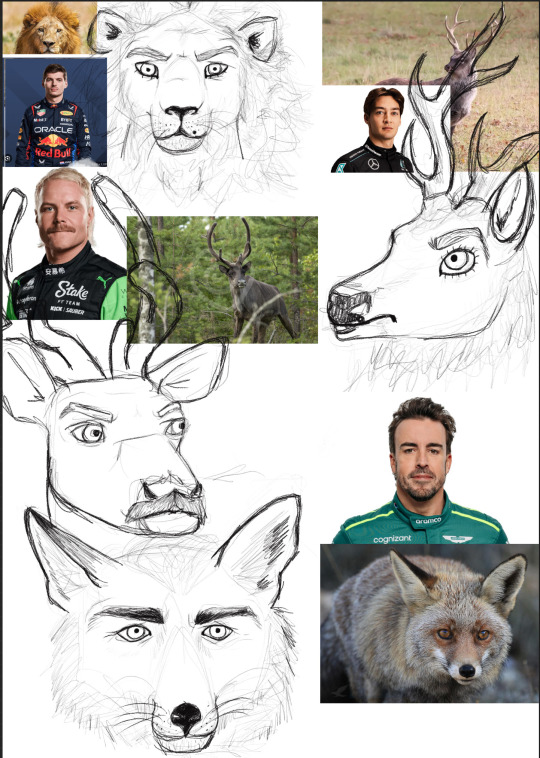
Drawings done while I was high and a bit tipsy lol
#max verstappen#sergio checo pérez#daniel ricciardo#yuki tsunoda#liam lawson#charles leclerc#carlos sainz#lewis hamilton#george russell#kimi antonelli#oscar piastri#lando norris#kevin magnussen#nico hulkenberg#pierre gasly#esteban ocon#jack doohan#ollie bearman#valterri bottas#zhou guanyu#gabriel bortoleto#lance stroll#fernando alonso#literally all of them#f1 art#f1#formula 1#formula one#some I couldn't full decide on one and just had to throw them all down#i had to literally update the list like every other day because of new rookie announcements were happening like every second
32 notes
·
View notes
Text
Alright fellas Ice hybrids go!
Cotton a Mud/Ice hybrid (named before I realised what environment cotton grows in but I'm in too deep to change it now). A rather imposing figure, Cotton doesn't talk much and others don't really talk to him. He works as a guard in the Skywing Palace (Upon personal request of one Swallowtail) being the only none Skywing (or Sky hybrid) to be a guard in the palace. He's engaged to Swallowtail and Alpine wearing their feathers to show it. (Swallowtail and Alpine wear a horn band with Sapphires to represent Cotton). The three of them met during a time of uncertainty for hybrids in Pyrriha, they bonded and have stuck together ever since.

Evening and Fox sand/Ice siblings (ignore the fact Evening is not a Sand or Ice name once again I am in to deep to change it, also I made Fox a bit more chonky then he originally was but I love it) Evening is several years older then Fox, they don't have a close relationship but at most they do care for each other. Evening teaches the history of the Sand and Ice kingdom at the school in their hometown.
Fox participates in illegal fights at the Scorpion Den, he's currently dating Hydra after she beat his ass in a fight, they get along really well.


Reflection a Hive/Ice hybrid and husband of Tulang. Reflection has memory loss often relying on writing down what happens in a day as well as what others tell him. This has caused mild amounts of paranoia as he has no way of telling if what their saying is true unless he deemed it important enough to write down.


Illusion and Hare a pair of Night/Ice hybrids living in an Ice kingdom village called Where-the-colours-collied, a village not to far from where the remains of the Great Ice Cliff used to be. The village is full of dragons from different tribes and hybrids (The Populis is still mostly Icewings and Ice hybrids). Hare and Illusion don't stand out but they are the only Night/Ice hybrids in the village. Illusion goes to JMA. Most of the students and teachers believe he's Black with White stripes, only a few dragons know that his scales change colour, his boyfriend Starfall is one of them.
So firstly, I changed Hares colours because her original colours where picked from an OC that belonged to one of my old friends. I'm no longer friends with them and didn't like how the colours looked, her new colours are picked from Auroura pictures. Hare was born under an Auroura but doesn't have any powers, instead she uses the old old way and uses the stars to predicted events, most think this is unreliable but they shut up real quick when she gives them a wack.



Finally Lupine another Mud/Ice hybrid with no relation to Cotton. Lupine lives in the unnamed Village where all vanish, he was running from an arranged marriage with a Mudwing noble. He is now happily married to Sparkling, Fir and Vampire wearing one of Vampire bats feathers as a show of this. Lupine provides entertainment for Sparkling's bar have an almost angelic singing voice.

I'm really proud of how these guys look now that I'm more confident in drawing Icewings, I'm extra proud of Cotton and Lupine look now. I also really like Hares new colour pallet I think it's more pleasing to look at then her old one.
Imma start working on the next batch soon since I got a new note book now.
#wings of fire#wof#art#digital art#my art#my oc#wings of fire hybrid#Icewing#Mudwing#Sandwing#Nightwing#Hivewing
21 notes
·
View notes
Text
Mammals of Maglor’s Gap and Lothlann
Now that I’ve finished world building posts on birds for each Fëanorian realm pre Amon Ereb, I’m going through mammals next! Mammals of the March of Maedhros can be found here and my environmental world building Masterlist is here!
Maglor’s Gap was the widest break in the mountains and cliffs dividing Beleriand and the lands to the north. It lay between the blue mountains to the east and the March of Maedhros to the west. Lothlann was a wide expanse of plains to the north of the Gap. The rivers greater and little Gelion ran around the western and eastern borders.
Forest steppes: wild goat, wood bison, southern white breasted hedgehog, gray marmot, ground squirrel, dormouse, woolly hares, long eared hedgehog, gray shrews, northern hog badger, sable (rare), steppe mouse, lesser noctule (bat), wildcat, red fox, red deer
Bordering mountain fences: Caucasian Tur, mouflon, chamois, alpine pika, pond bat, marbled polecat, saiga antelope, steppe polecat, mountain weasel, ibex (rare), argali
Plains: goitered gazelle, steppe wolf, wild horse, northern water vole (by the rivers), snow vole, grey dwarf hamster, common hare, common rabbit, striped field mouse, ural field mouse, harvest mouse, mountain hare, field vole (also primarily by rivers), wild horse
World building notes:
The horse based cavalry of Maglor is one of the few details we have about this region. I headcanon that the horses in question are a mixture of the descendants of the Valinor born horses brought by the Fëanorian host as well as wild horses from Estolad, Himlad, Lothlann and the other plains regions of Eastern Beleriand.
Sheep and goats provide the majority of milk and cheese products in the Gap. Some of these species are imported from other regions like sheep from Thargelion.
Domesticated bovine are rare in Eastern Beleriand outside Thargelion and parts of Estolad. There are however wild and semi domesticated bison such as the wood bison, especially on the borders of forested and forest steppe regions. Fur, skin and bones from bison are used by both Noldorin and Avarin elves for clothing and other materials.
Wild hamsters, rabbits, hares and voles were used by a select few of Maglor’s cavalry as companions and even spies.
A regiment of foot based scouts had the sigil of a hare in the form of a light silhouette upon a black background.
55 notes
·
View notes
Note
What's the fauna of Greece like? I'm guessing there are a lot of reptiles and bovidae...
Bovidae not so much. Apart from the domestic ones of course which are plenty indeed, especially the goats, wild species of bovidae are only the alpine chamois and the endemic Cretan ibex. A notable yet domestic species is the water buffalo.
Other ungulates include the wild boar, the red deer, the fallow deer, and the roe deer. There are originally domestic horses which escaped or were abandoned by their owners and have now formed herds up in the mountains and have returned to a semi-wild state of being. There is also the Greek breed of the Skyrian horse, some small and delicate horses that are maybe slightly temperamental. Plenty of domestic donkeys and mules in Greece too.

A Cretan ibex and a Skyrian horse.
In Greece there are also the European rabbit and the European hare, the southern white-breasted hedgehog and the northern white-breasted hedgehog, the European mole, some ten species of shrew and around thirty species of rodents (squirrels, dormice, mice, rats and voles).
There are about 36 species of bats. Larger, carnivorous mammals found in Greece include the European wildcat, the Balkan lynx, the red fox, the golden jackal, the grey wolf, the Eurasian brown bear, the introduced American mink, the least weasel, the European polecat, the marbled polecat, the beech marten, the European pine marten, the European badger and the Eurasian otter. There used to be Eurasian beavers in Greece but they have gone extinct from the region, however there are efforts to reintroduce the animal to the country. Greek seas are the most significant habitat of the severely endangered Mediterranean monk seal, the only seal in the Mediterranean sea, because this is where it reproduces, so there is a national marine park specifically for its protection. There are also 15 species of dolphins, whales and porpoises, including sperm whales and orcas. The dolphin is Greece's national animal.
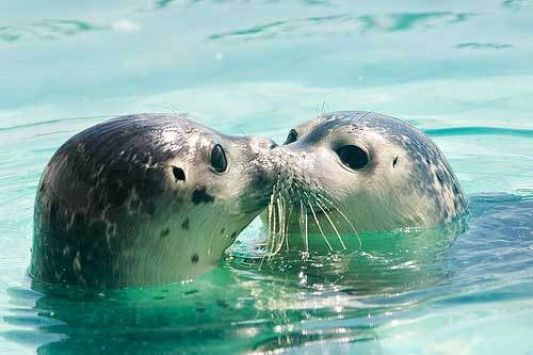
Mediteranean monk seals.
The most populus large animal community in Greece is by far the avian fauna. There is a total of 478 bird species, so I am not going to list them all. Greece is a very good destination for bird watching. It is a remaining habitat for several birds that have started disappearing from the rest of Europe. Some of its most notable birds are the flamingos, the Dalmatian pelicans, several eagles and falcons and at least three species of large vultures.

Dalmatian pelican, flamingo and vulture of Greece.
Now the reptiles, I don't know if they are considered many, more like so-so. There are 76 species of reptiles in Greece, most of them lizards but a lot of snakes as well. There are also three species of sea turtles and six more species of tortoises and pond turtles, including the endangered Caretta caretta loggerhead sea turtle which also reproduces almost exclusively in Greece so we have another national marine park for the protection of this turtle. Notable is the presence of two species of chameleons. In Greece, only the vipers are dangerous snakes. There are five species of vipers in the country, including the endemic Milos viper.

The characteristically brown Milos viper, the Mediterranean chameleon and the loggerhead sea turtle.
There are 26 species of amphibians, mostly frogs but several salamanders as well. Three of them are endemic; the Karpathos frog, the Cretan frog and the Karpathos salamander.
On the other hand, there are several freshwater fishes, namely around 160 species, of which at least 18 are endemic plus the entire Tropidophoxinellus genus which is also endemic in the country.
There are about 1101 species of insects and 145 species of arachnids. Arachnids present in Greece include the scorpion, the Mediterranean black widow and the Mediterranean recluse (brown spider), those three being the venomous ones that can be a danger to humans. There are tarantulas in Greece as well, but not any dangerous species. It's important to note that both in the arachnid case and in the vipers' case, they are generally not aggressive and reports of dangerous bites / stings are extremely super rare. Same with the orcas. They don't approach the shores and humans. Same with the brown bears. They don't attack humans. Sometimes they get into the villages of Grevena to find food and people stay inside their houses but I don' t think there's ever been an attack actually.
As for marine fishes, I couldn't find a conclusive source on how many they can possibly be but they are a lot obviously. There are sharks in Greece, including large ones, including actually the occasional passing by of the great white shark but they stay way in the open. There's never been any report of a healthy white shark nearing shallow waters and populated coastal places. On the contrary, dolphins show up all the time, it's always so exciting to see them. And the seals rarely even lounge on the beaches next to swimmers. Back to the fish, there are rays but also haven't heard anything happening. On the contrary, more frequent are the incidents of stepping on a scorpaena fish and that hurts like hell. There are also venomous jellyfish in Greece that present a danger, however I don't think they are dangerous for a human's life. But it will need a visit to the hospital. Here I won't talk about the incredibly stupid decision I made once that resulted in a large jellyfish lying flat on my face. Thankfully it was a saloufa, which is not venomous, because if it was I would probably be before Saint Peter's Gates now after such a full face contact. The TERROR of seeing a jellyfish lying flat on your face though...
16 notes
·
View notes
Text
Bunhild - Adherent of Hare

A protector of small creatures and a hunter of poachers, Bunhild was born to Hare shaman parents who taught her that all the Spirits of the Wild are important and have lessons to teach. While she didn't become a shaman like her parents, she is still a close follower of Bunny and tries to embody all the virtues she was taught about this Spirit. When she was a child, Bunhild befriended and tamed an alpine wolf pup, which she named Jackalupe (or Jack for short), starting the beginning of her journey to becoming a Ranger. She loves and - along with her pets - protects all smaller and weaker creatures, but has an obvious soft spot for bunnies.
"Small creatures like rabbits and deer can't fight back against a Norn, there's no honor in killing something that can't fight back, and nobody would boast at a moot about their great hunt that involved killing a bunny. And not even killing them for survival and sustenance? That just makes the actions of poachers despicable!" - Bunhild



#Bunhild#nornvember#gw2#guild wars 2#gw2 fan submission#gw2 norn#gw2 oc#gw2 ocs#my oc#my ocs#norn#norn oc
15 notes
·
View notes
Text
What TMA characters do you think would be as an animal? Here's a few of mine! Only just started S4 BTW so opinions may change. Also some of these I based of what the animal represents or their tendencies.
Jon - Moth vibes, dragon fly, fox, panther
Martin - maybe a fox due to appearances. Possibly Cow. Golden retriever personality S1, ooh or an Ainu maybe an artic wolf? Maybe a bear?
Tim - ferret, racoon, lizard, cool animals
Sasha - Mimic Octopus and blue jay for reasons... But yea maybe something mousey or like an owl especially for s1?
Melanie - Pygmy Goat, ram idk she just kinda guves that vibe. Like look at them and then look at her. Same thing.
Basira - crow/raven aka a corvid bcs she's smart
Daisy - wolf, Black-footed cat, other types of hunters
Elias - snake (obvi), jackal, eagle, owl, agree with the horned owl
Peter Lukas - polar bear agree with that, squid/octopus, Kelpie (not real but oh well)
Mike - birds. Idk which just birds. Preferably blue or white. Maybe the Impundulu or Alpine Chough. A goat/ram bcs thunder. Marten. Snow lepord
Michael - Adax, box jellyfish, sea slug, lilac breasted roller
Helen - butterfly, Livingstone's Cichlids, Orchid mantis
Georgie - fluffy cat! Bat, raven, Moth, black swan
Gerry - axolotl, bearded dragon, bat, again cool animals
Trevor - bear, wolf, hawk
Julia - hare, black ram, wolf
Nikola - coyote, cuttlefish, Angler Fish, vampire squid and yknow what screaching owl
Breekon & Hope - margay, rams, bulls, parrot, gorrila, tiger
Danny (Stoker) - honey badger
Any other ideas? Even if it's just one or two give it a whirl ❤️
#the magnus archives#tma#jonathan sims#elias bouchard#jon sims#The magnus crew as animals#martin blackwood#tim stoker#space#not sasha#melanie king#georgie barker#daisy tonner#basira hussain#peter lukas#mike crew#michael crew#michael#tma michael#michael distortion#Helen#helen distortion#gerry keay#tma gerry#gerard keay#nikola orsinov#Nikola#breekon and hope#trevor herbert#julia montauk
50 notes
·
View notes
Text
IceWing Names- Letter A
Abalone (A shellfish, or a very pale gray color.) Achromatic (Literally means 'without color'.) Adélie (A type of penguin. Great for a SeaWing hybrid.) Agate (A variety of chalcedony that comes in many colors, often with swirl or banded patterns throughout.) Ague (A fever or shivering fit.) Ahmar (A mountain range of the Ethiopian Highlands.) Akaishi (A mountain range in Japan.) Alabaster (A soft, white, translucent rock that is often used for carving and making decorative objects.) Alaska (As in the state.) Alba (Latin for 'white'.) Albedo (The fraction of light reflected by a surface.) Albescent (Growing or shading into white.) Albite (A white, brittle, glassy mineral.) Album (Also Latin for 'white'.) Algid (Very cold or chilly.) Alp (A high, rugged mountain that is often snowcapped. Could also be good for a SkyWing hybrid.) Alpenglow (The rosy light of the setting or rising sun seen on high mountains.) Alpine (Relating to high mountains.) Amethyst (A violet or purple quartz gem or a violet color.) Ametrine (A mixture of amethyst and citrine.) Andes (A South American mountain range that i also one of the worlds longest.) Anhydrite (A mineral that is made up of calcium and sulfate. Often pale blue or pale violet.) Annapurna (The 10th highest mountain in the world, located in Nepal.) Antarctic (Relating to the south polar region or Antarctica. Antarctica can work too.) Antler (Horns typically grown on the head of male animals such as deer, and often shed.) Apatite (A phosphate mineral.) Apex (The top or highest part of something, especially one forming a point.) Apricity (The warmth of the sun in winter.) Aragonite (A calcium carbonate mineral that forms in carbonate sediments.) Arctic Hare (A species of hare adapted to live in the arctic.) Arctogadus (A type of fish found in icy waters.) Aufeis (A sheet-like mass of layered ice that forms from successive flows of ground or river water during freezing temperatures.) Aurora (A luminous phenomenon that consists of streamers or arches of light appearing in the upper atmosphere of a planet's magnetic polar regions.) Avalanche (A mass of snow, ice, and rocks falling rapidly down a mountainside.) Azure (A shade of bright blue.) Azurite (A soft, deep-blue copper mineral.)
#wings of fire#wof#wings of fire names#wof names#icewing#icewing names#a names#mineral names#gemstone names#blue color names#names in other languages#natural phenomena names#mammal names#fish names#location names#landscape names#purple color names#bird names#white color names#cold names#winter names
9 notes
·
View notes
Note
Have some Kwami swaps (and guess who I had these for!)
Ladybug- Vermillion, Harlequin Black Cat- Obscurité, Cat's Eye Butterfly- Ombre, Painted Lady, Psyche, Fleur de Lune, Amethyst Peacock- Plume, Aurora, Sapphire Bee- Yellow Jacket, Honey, Honeymoon, Honeysuckle Fox- Foxtrot Turtle- Peridot, Malachite, Clover Rat- Mulot, Mouseketeer Ox- Ox Cord, Oxford Tiger- Stripes Rabbit- Velours, March Hare, Flopsy Dragon- Komono, Garnet Snake- Fer-de-Lance, Black Mamba, Ophiuchus, Rattlesnake, Snake Eyes, Snakeskin Horse- Liberté, Mare Dare, Sleipnir Goat- Alpine, Everest, Ram (computer pun!), Opal Monkey (I didn't find any particularly interesting) Rooster- Cockatrice Dog- Sirius, Cerberus, Anubis, Retriever Pig- Rose Quartz
Honestly I love all of these.
11 notes
·
View notes
Text
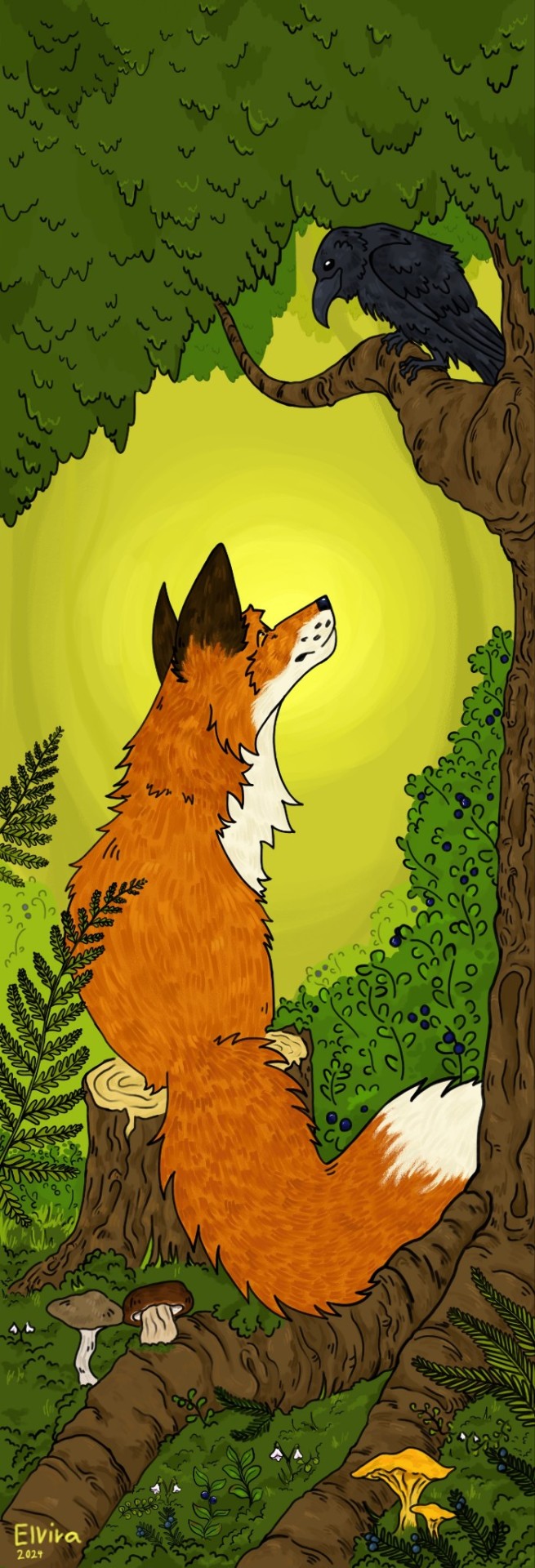
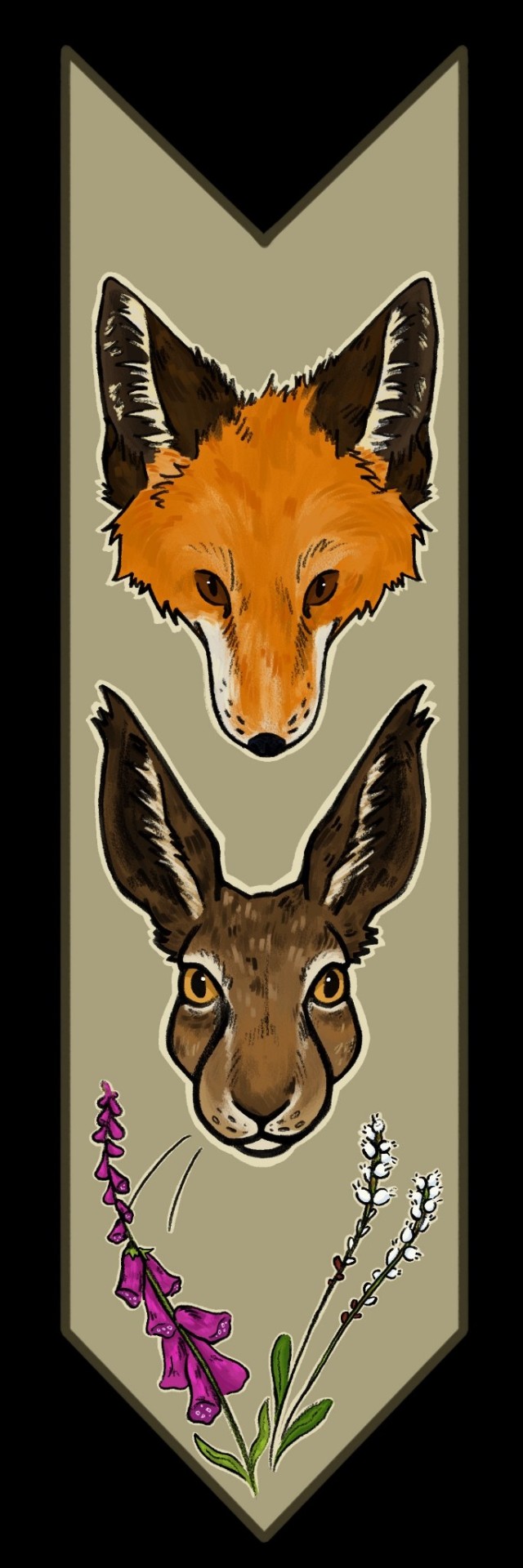
More bookmarks!
These were also commissioned by my mother, though this time she bought them as a birthday gift for my aunt. It's really about time I open commissions for people other than my own mom lol
The bookmark with the fox and the raven took an insane amount of time, I think I spent 13 hours on it! I was really making sure to pay attention to the details, and to take my time including different species of plants and fungi that can be found in my local area. In the background there are bushes of european blueberry/bilberry, and in the foreground there grows crowberry, clubmoss and twinflower. The mushrooms are penny bun, birch bolete and chanterelle. The big ferns on the left are lady-fern and the small ones on the right are deer fern.
On the second bookmark there's the heads of a red fox and a mountain hare. The plants growing at the bottom are foxgloves and alpine bistort. (in Norwegian it is known as "harerug", directly translated as "hare rye") So both the plants match the names of the animals :)
These were a lot of fun to work on! I'm hoping to make more bookmarks in the future, maybe I could even take commissions online for them, if anyone's interested.

7 notes
·
View notes
Text
Semifinals, Poll 5
White-tailed Ptarmigan vs Sickle-winged Nightjar


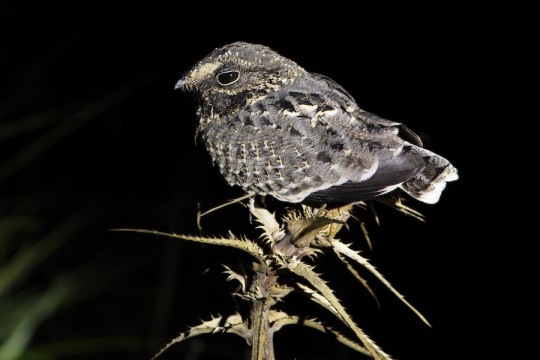
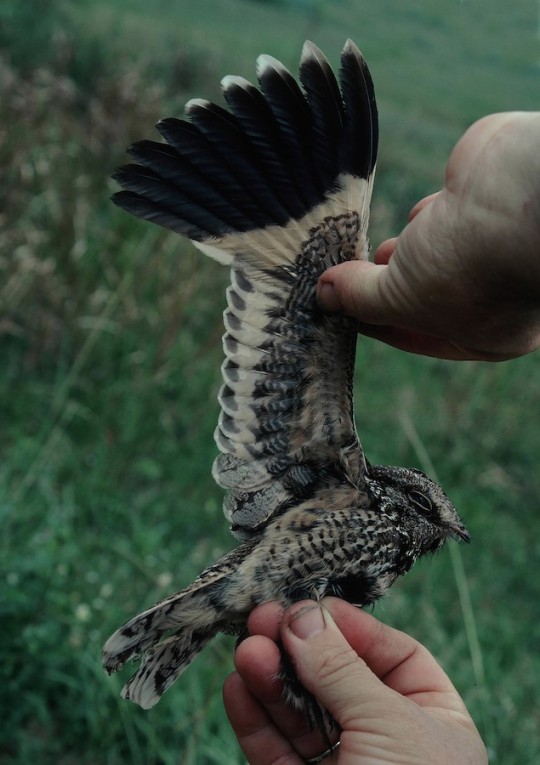
sources under the cut
White-tailed Ptarmigan (Lagopus leucura)
Lagopus is derived from Ancient Greek, meaning "hare foot". This is due to the heavily feathered legs and feet of ptarmigan.
eBird sightings: 5,809; IUCN Redlist Rating: Least Concern
Also known as the Snow Quail, this is the smallest bird in the grouse family. It serves as an indicator species for alpine tundra, and thankfully continues to fill a large range of western North America. The English name "ptarmigan" is Scottish Gaelic in origin, with 'tarmachan' meaning "croaker", referring to the bird's frog-like call. The p- was added due to a mistaken belief the word was Greek in origin, with the thinking being that the word related to 'pteron', "wing".
Sickle-winged Nightjar (Eleothreptus anomalus)
Eleothreptus, from Ancient Greek, means "marsh bred"
eBird sightings: 267; IUCN Redlist Rating: Vulnerable
There is not a lot of information on this bird, as nightjar are already cryptic and the common distribution of this bird hasn't been fully studied. They're currently found in northeastern Argentina, southern Paraguay, and southern Brazil. The Sickle-winged Nightjar shares its genus with a single other nightjar, which is also sparsely distributed across South America.
Images: Ptarmigan (summer - Garrett Hughes, winter - Josiah Verbrugge); Nightjar (wing - Kristof Zyskowski, body - Martjan Lammertink)
#aka: actually idk what thread is in common between these two. they're cute tho#hipster bird main bracket#white tailed ptarmigan#sickle winged nightjar#polls#caprimulgiformes#galliformes
36 notes
·
View notes
Text
Thursday Postcard Hunt - Winter: Animals in Snow
… is this week’s theme for Thursday Postcard Hunt. Postcard from Finland The mountain hare, also known as blue hare, tundra hare, variable hare, white hare, snow hare, alpine hare, and Irish hare, is a Palearctic hare that is largely adapted to polar and mountainous habitats. This postcard features an icon on the top right side and the image is repeated on an ink stamp on the backin support of…
#europe#finland#hare#owl#postcard#postcrossing#reindeer#snow#snowdrops#the netherlands#Thursday Postcard Hunt#USA#white#winter
3 notes
·
View notes
Text
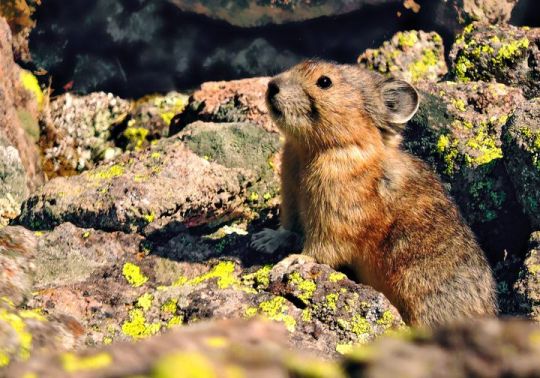
American Pika at Great Sand Dunes National Park and Preserve
They are tough and mighty, American pikas inhabit the talus-filled alpine tundra of western North America. These furry mammals, frequently mistaken for their yellow electrical counterpart Pikachu, are herbivores that forage and gather grasses in the summertime to prepare for the cold and harsh winters where they continue to stay active under the snowpack. Blending into the barren environment of the treeless and rock filled alpine tundra, their fur ranges in color from tan to brown. Due to their impressive camouflage efforts, American pikas are typically heard first before being seen. Often described as a lamb-like “bleating,” pikas use their high pitched squeals in an effort to protect their territories and to alert other pikas of an incoming predator. Adapted to the near freezing summer temperatures of the tundra, American pikas are facing pressures with increasing temperatures limiting the suitable habitat needed for their survival. While many other species are shifting their habitats toward higher elevations to escape the heat, most pikas are already at the highest limits of their habitat. Similar to polar bears, pikas have slowly become another indicator species to symbolize the potential effects of climate change. Although not listed under the Endangered Species Act, pikas are under a potential threat with changing temperatures, and might be one of the first species, along with many more, to disappear from the region if we don’t come together to help and protect our unique wildlife.
Pikas are not rodents, but lagomorphs, related to rabbits and hares.
Photo: NPS/Patrick Myers
via: National Park Service
26 notes
·
View notes
Text
All animal species (and a couple algae) that have kept the same scientific name since Linnaeus
The first work of taxonomy that is considered as having any scientific authority for animal species was the 10th edition of Linnaeus' Systema Naturae, published in 1758. (Also a book on spiders called Aranei Suecici, published one year before.) That's the foundational text of the binominal system of nomenclature of species still in use today. Since then most of Linnaeus' original species (4379 species, of which 185 mammals, 554 birds, 217 "amphibians" (including reptiles and cartilaginous fish), 379 fishes, 2104 "insects" (including various arthropods, of which 664 are beetles and 543 are moths & butterflies crammed into only 3 genera), and 940 "worms" (including basically all other invertebrates, and even some protists and algae)) have been dismembered, renamed, or at least moved to different genera (e.g. the house sparrow went from Fringilla domestica to Passer domesticus).
Here is a list of all of Linnaeus' original species from 1758 that still retain their original name. I believe they are 484 in total.
"Mammalia"
(Primates)
Homo sapiens (human)
Lemur catta (ring-tailed lemur)
Vespertilio murinus (rearmouse bat)
(Bruta)
Elephas maximus (Asian elephant)
Trichechus manatus (West Indian manatee)
Bradypus tridactylus (three-toed sloth)
Myrmecophaga tridactyla (giant anteater)
Manis pentadactylus (Chinese pangolin)
(Ferae)
Phoca vitulina (harbor seal)
Canis familiaris (dog)
Canis lupus (grey wolf)
Felis catus (house cat)
Viverra zibetha (Indian civet)
Mustela erminea (stoat)
Mustela furo (ferret)
Mustela lutreola (European mink)
Mustela putorius (wild ferret)
Ursus arctos (brown bear)
(Bestiae)
Sus scrofa (wild boar/pig)
Dasypus septemcinctus (seven-banded armadillo)
Dasypus novemcinctus (nine-banded armadillo)
Erinaceus europaeus (European hedgehog)
Talpa europaea (European mole)
Sorex araneus (common shrew)
Didelphis marsupialis (common opossum)
(Glires)
Rhinoceros unicornis (Indian rhinoceros)
Hystrix brachyura (Malayan porcupine)
Hystrix cristata (crested porcupine)
Lepus timidus (common hare)
Castor fiber (European beaver)
Mus musculus (house mouse)
Sciurus vulgaris (red squirrel)
(Pecora)
Camelus dromedarius (dromedary camel)
Camelus bactrianus (Asian camel)
Moschus moschiferus (musk deer)
Cervus elaphus (red deer)
Capra hircus (goat)
Capra ibex (Alpine ibex)
Ovis aries (sheep)
Bos taurus (cow)
Bos indicus (zebu)
(Belluae)
Equus caballus (horse)
Equus asinus (donkey)
Equus zebra (mountain zebra)
Hippopotamus amphibius (hippopotamus)
(Cete)
Monodon monoceros (narwhal)
Balaena mysticetus (bowhead whale)
Physeter macrocephalus (sperm whale)
Delphinus delphis (common dolphin)
"Aves"
(Accipitres)
Vultur gryphus (Andean condor)
Falco tinnunculus (common kenstrel)
Falco sparverius (sparrowhawk)
Falco columbarius (pigeonhawk)
Falco subbuteo (Eurasian hobby)
Falco rusticolus (gyrfalcon)
Strix aluco (tawny owl)
Lanius excubitor (great grey shrike)
Lanius collurio (red-backed shrike)
Lanius schach (long-tailed shrike)
(Picae)
Psittacus erithacus (grey parrot)
Ramphastos tucanus (white-throated toucan)
Buceros bicornis (great hornbill)
Buceros rhinoceros (rhinoceros hornbill)
Crotophaga ani (smooth-billed ani)
Corvus corax (raven)
Corvus corone (carrion crow)
Corvus frugilegus (rook)
Corvus cornix (hooded crow)
Coracias oriolus (golden oriole)
Coracias garrulus (European roller)
Gracula religiosa (hill myna)
Paradisaea apoda (greater bird-of-paradise)
Cuculus canorus (common cuckoo)
Jynx torquilla (wryneck)
Picus viridis (green woodpecker)
Sitta europaea (Eurasian nuthatch)
Merops apiaster (European bee-eater)
Merops viridis (blue-throated bee-eater)
Upupa epops (Eurasian hoopoe)
Certhia familiaris (Eurasian treecreeper)
Trochilus polytmus (red-billed streamertail hummingbird)
(Anseres)
Anas platyrhynchos (mallard duck)
Anas crecca (teal duck)
Mergus merganser (common merganser)
Mergus serrator (red-breasted merganser)
Alca torda (razorbill auk)
Procellaria aequinoctialis (white-chinned petrel)
Diomedea exulans (wandering albatross)
Pelecanus onocrotalus (great white pelican)
Phaeton aethereus (red-billed tropicbird)
Larus canus (common gull)
Larus marinus (great black-backed gull)
Larus fuscus (lesser black-backed gull)
Sterna hirundo (common tern)
Rhynchops niger (black skimmer)
(Grallae)
Phoenicopterus ruber (American flamingo)
Platalea leucorodia (Eurasian spoonbill)
Platalea ajaia (roseate spoonbill)
Mycteria americana (wood stork)
Ardea cinerea (grey heron)
Ardea herodias (blue heron)
Ardea alba (great egret)
Scolopax rusticola (Eurasian woodcock)
Charadrius hiaticula (ringed plover)
Charadrius alexandrinus (Kentish plover)
Charadrius vociferus (killdeer plover)
Charadrius morinellus (Eurasian dotterel)
Recurvirostra avosetta (pied avocet)
Haematopus ostralegus (Eurasian oystercatcher)
Fulica atra (Eurasian coot)
Rallus aquaticus (water rail)
Psophia crepitans (grey-winged trumpeter)
Otis tarda (great bustard)
Struthio camelus (ostrich)
(Gallinae)
Pavo cristatus (Indian peafowl)
Meleagris gallopavo (wild turkey)
Crax rubra (great curassow)
Phasianus colchicus (common pheasant)
Tetrao urogallus (western capercaillie)
(Passeres)
Columba oenas (stock dove)
Columba palumbus (wood pigeon)
Alauda arvensis (Eurasian skylark)
Sturnus vulgaris (European starling)
Turdus viscivorus (mistle thrush)
Turdus pilaris (fieldfare thrush)
Turdus iliacus (redwing thrush)
Turdus plumbeus (red-legged thrush)
Turdus torquatus (ring ouzel)
Turdus merula (blackbird)
Loxia curvirostra (crossbill)
Emberiza hortulana (ortolan bunting)
Emberiza citrinella (yellowhammer)
Emberiza calandra (corn bunting)
Fringilla coelebs (common chaffinch)
Motacilla alba (white wagtail)
Motacilla lava (yellow wagtail)
Parus major (great tit)
Hirundo rustica (barn swallow)
Caprimulgus europaeus (European nightjar)
"Amphibia"
(Reptiles)
Testudo graeca (Greek tortoise)
Draco volans (flying dragon)
Lacerta agilis (sand lizard)
Rana temporaria (common frog)
(Serpentes)
Crotalus horridus (timber rattlesnake)
Crotalus durissus (tropical rattlesnake)
Boa constrictor (common boa)
Coluber constrictor (eastern racer)
Anguis fragilis (slowworm)
Amphisbaena alba (red worm lizard)
Caecilia tentaculata (white-bellied caecilian)
(Nantes)
Petromyzon marinus (sea lamprey)
Raja clavata (thornback ray)
Raja miraletus (brown ray)
Squalus acanthias (spiny dogfish)
Chimaera monstrosa (rabbitfish)
Lophius piscatorius (anglerfish)
Acipenser sturio (sea sturgeon)
Acipenser ruthenus (sterlet sturgeon)
"Pisces"
(Apodes)
Muraena helena (Mediterranean moray)
Gymnotus carapo (banded knifefish)
Trichiurus lepturus (cutlassfish)
Anarhichas lupus (Atlantic wolffish)
Ammodytes tobianus (lesser sandeel)
Xiphias gladius (swordfish)
Stromateus fiatola (blue butterfish)
(Jugulares)
Callionymus lyra (common dragonet)
Uranoscopus scaber (stargazer)
Trachinus draco (greater weever)
Gadus morhua (Atlantic cod)
Blennius ocellaris (butterfly blenny)
Ophidion barbatum (snake cusk-eel)
(Thoracici)
Cyclopterus lumpus (lumpsucker)
Echeneis naucrates (sharksucker)
Coryphaena equiselis (pompano)
Coryphaena hippurus (dorado)
Gobius niger (black goby)
Govius paganellus (rock goby)
Cottus gobio (European bullhead)
Scorpaena porcus (black scorpionfish)
Scorpaena scrofa (red scorpionfish)
Zeus faber (John Dory)
Pleuronectes platessa (European plaice)
Chaetodon striatus (banded butterflyfish)
Chaetodon capistratus (foureye butterflyfish)
Sparus aurata (gilt-head bream)
Labrus merula (brown wrasse)
Labrus mixtus (cuckoo wrasse)
Labrus viridis (green wrasse)
Sciaena umbra (brown meagre)
Perca fluviatilis (European perch)
Gasterosteus aculeatus (three-spined stickleback)
Scomber scombrus (Atlanti mackerel)
Mullus barbatus (red mullet)
Mullus surmuletus (surmullet)
Trigla lyra (piper gurnard)
(Abdominales)
Cobitis taenia (spined loach)
Silurus asotus (Amur catfish)
Silurus glanis (Wels catfish)
Loricaria cataphracta (suckermouth catfish)
Salmo carpio (Garda trout)
Salmo trutta (brown trout)
Salmo salar (Atlantic salmon)
Fistularia tabacaria (bluespotted cornetfish)
Esox lucius (northern pike)
Argentina sphyraena (European argentine)
Atherina hepsetus (Mediterranean sand smelt)
Mugil cephalus (flathead mullet)
Exocoetus volitans (tropical flying fish)
Polynemus paradiseus (Paradise threadfin)
Clupea harengus (Atlantic herring)
Cyprinus carpio (common carp)
(Branchiostegi)
Mormyrus caschive (bottlenose elephantfish)
Balistes vetula (queen triggerfish)
Ostracion cornutus (longhorn cowfish)
Ostracion cubicus (yellow boxfish)
Tetraodon lineatus (Fahaka pufferfish)
Diodon hystrix (spot-fin porcupinefish)
Diodon holocanthus (long-spine porcupinefish)
Centriscus scutatus (grooved shrimpfish)
Syngnathus acus (common pipefish)
Syngnathus pelagicus (pelagic pipefish)
Syngnathus typhle (broad-nosed pipefish)
Pegasus volitans (longtail seamoth)
"Insecta"
(Coleoptera)
Scarabaeus sacer (sacred scarab)
Dermestes lardarius (larder beetle)
Dermestes murinus (larder beetle)
Hister unicolor (clown beetle)
Hister quadrimaculatus (clown beetle)
Silpha obscura (carrion beetle)
Cassida viridis (tortoise beetle)
Cassida nebulosa (tortoise beetle)
Cassida nobilis (tortoise beetle)
Coccinella trifasciata (ladybug)
Coccinella hieroglyphica (ladybug) [Coccinella 5-punctata, 7-punctata, 11-punctata, and 24-punctata survive as quinquepunctata, septempunctata, undecimpunctata, and vigintiquatorpunctata]
Chrysomela populi (leaf beetle)
Chrysomela lapponica (leaf beetle)
Chrysomela collaris (leaf beetle)
Chrysomela erythrocephala (leaf beetle)
Curculio nucum (nut weevil)
Attelabus surinamensis (leaf-rolling weevil)
Cerambyx cerdo (capricorn beetle)
Leptura quadrifasciata (longhorn beetle)
Cantharis fusca (soldier beetle)
Cantharis livida (soldier beetle)
Cantharis oscura (soldier beetle)
Cantharis rufa (soldier beetle)
Cantharis lateralis (soldier beetle)
Elater ferrugineus (rusty click beetle)
Cicindela campestris (green tiger beetle)
Cicindela sylvatica (wood tiger beetle)
Buprestis rustica (jewel beetle) [Buprestis 8-guttata survives as octoguttata]
Dytiscus latissimus (diving beetle)
Carabus coriaceus (ground beetle)
Carabus granulatus (ground beetle)
Carabus nitens (ground beetle)
Carabus hortensis (ground beetle)
Carabus violaceus (ground beetle)
Tenebrio molitor (mealworm)
Meloe algiricus (blister beetle)
Meloe proscarabaeus (blister beetle)
Meloe spec (blister beetle)
Mordela aculeata (tumbling glower beetle)
Necydalis major (longhorn beetle)
Staphylinus erythropterus (rove beetle)
Forficula auricularia (common earwig)
Blatta orientalis (Oriental cockroach)
Gryllus campestris (field cricket)
(Hemiptera)
Cicada orni (cicada)
Notonecta glauca (backswimmer)
Nepa cinerea (water scorpion)
Cimex lectularius (bedbug)
Aphis rumici (black aphid)
Aphis craccae (vetch aphid)
Coccus hesperidum (brown scale insect)
Thrips physapus (thrips)
Thrips minutissimum (thrips)
Thrips juniperinus (thrips)
(Lepidoptera)
Papilio paris (Paris peacock butterfly)
Papilio helenus (red Helen butterfly)
Papilio troilus (spicebush swallowtail butterfly)
Papilio deiphobus (Deiphobus swallowtail butterfly)
Papilio polytes (common Mormon butterfly)
Papilio glaucus (eastern tiger swallowtail butterfly)
Papilio memnon (great Mormon butterfly)
Papilio ulysses (Ulysses butterfly)
Papilio machaon (Old World swallowtail butterfly)
Papilio demoleus (lime swallowtail butterfly)
Papilio nireus (blue-banded swallowtail butterfly)
Papilio clytia (common mime butterfly)
Sphinx ligustri (privet hawk-moth)
Sphinx pinastri (pine hawk-moth) [genus Phalaena was suppressed, but seven subgenera created by Linnaeus are now valid as genera]
(Neuroptera)
Libellula depressa (chaser dragonfly)
Libellula quadrimaculata (four-spotted skimmer dragonfly)
Ephemera vulgata (mayfly)
Phryganea grandis (caddisfly)
Hemerobius humulinus (lacewing)
Panorpa communis (scorpionfly)
Panorpa germanica (scorpionfly)
Raphidia ophiopsis (snakefly)
(Hymenoptera)
Cynips quercusfolii (oak gall wasp)
Tenthredo atra (sawfly)
Tenthredo campestris (sawfly)
Tenthredo livida (sawfly)
Tenthredo mesomela (sawfly)
Tenthredo scrophulariae (sawfly)
Ichneumon extensorius (parasitoid wasp)
Ichneumon sarcitorius (parasitoid wasp)
Sphex ichneumoneus (digger wasp)
Vespa crabro (European hornet)
Apis mellifera (honey bee)
Formica fusca (silky ant)
Mutilla europaea (large velvet ant)
(Diptera)
Oestrus ovis (sheep botfly)
Tipula oleracea (marsh cranefly)
Tipula hortorum (cranefly)
Tipula lunata (cranefly)
Musca domestica (housefly)
Tabanus bovinus (pale horsefly)
Tabanus calens (horsefly)
Tabanus bromius (brown horsefly)
Tabanus occidentalis (horsefly)
Tabanus antarcticus (horsefly)
Culex pipiens (house mosquito)
Empis borealis (dance fly)
Empis pennipes (dance fly)
Empis livida (dance fly)
Conops flavipes (thick-headed fly)
Asilus barbarus (robberfly)
Asilus crabroniformis (hornet robberfly)
Bombylius major (bee fly)
Bombylius medius (bee fly)
Bombylius minor (bee fly)
Hippobosca equina (forest fly)
(Aptera)
Lepisma saccharina (silverfish)
Podura aquatica (water springtail)
Termes fatale (termite)
Pediculus humanus (human louse)
Pulex irritans (human flea)
Acarus siro (flour mite)
Phalangium opilio (harvestman)
Araneus angulatus (orb-weaving spider)
Araneus diadematus (European garden spider)
Araneus marmoreus (marbled orbweaver)
Araneus quadratus (four-spotted orbweaver -- last four are by Clerck 1757, some of the very few surviving pre-Linnean names!)
Scorpio maurus (large-clawed scorpion)
Cancer pagurus (brown crab)
Oniscus asellus (common woodlouse)
Scolopendra gigantea (giant centipede)
Scolopendra morsitans (red-headed centipede)
Julus fuscus (millipede)
Julus terrestris (millipede)
"Vermes"
(Intestina)
Gordius aquaticus (horsehair worm)
Lumbricus terrestris (common earthworm)
Ascaris lumbricoides (giant roundworm)
Fasciola hepatica (liver fluke)
Hirudo medicinalis (medicinal leech)
Myxine glutinosa (Atlantic hagfish)
Teredo navalis (shipworm)
[shout out to Furia infernalis, a terrifying carnivorous jumping worm that Linnaeus described, but which doesn't seem to actually exist]
(Mollusca)
Limax maximus (leopard slug)
Doris verrucosa (warty nudibranch)
Nereis caerulea (ragworm)
Nereis pelagica (ragworm)
Aphrodita aculeata (sea mouse)
Lernaea cyprinacea (anchor worm)
Scyllaea pelagica (Sargassum nudibranch)
Sepia officinalis (common cuttlefish)
Asterias rubens (common starfish)
Echinus esculentus (edible sea urchin)
(Testacea)
Chiton tuberculatus (West Indian green chiton)
Lepas anatifera (goose barnacle)
Pholas dactylus (common piddock)
Mya arenaria (softshell clam)
Mya truncata (truncate softshell)
Solen vagina (razor clam)
Tellina laevigata (smooth tellin)
Tellina linguafelis (cat-tongue tellin)
Tellina radiata (sunrise tellin)
Tellina scobinata (tellin)
Cardium costatum (ribbed cockle)
Donax cuneatus (wedge clam)
Donas denticulatus (wedge clam)
Donax trunculus (wedge clam)
Venus casina (Venus clam)
Venus verrucosa (warty venus)
Spondylus gaederopus (thorny oyster)
Spondylus regius (thorny oyster)
Chama lazarus (jewel box shell)
Chama gryphoides (jewel box shell)
Arca noae (Noah's ark shell)
Ostrea edulis (edible oyster)
Anomia aurita (saddle oyster)
Anomia ephippium (saddle oyster)
Anomia hysterita (saddle oyster)
Anomia lacunosa (saddle oyster)
Anomia spec (saddle oyster)
Anomia striatula (saddle oyster)
Mytilus edulis (blue mussel)
Pinna muricata (pen shell)
Pinna nobilis (fan mussel)
Pinna rudis (rough pen shell)
Argonauta argo (argonaut)
Nautilus pompilius (chambered nautilus)
Conus ammiralis (admiral cone snail)
Conus aulicus (princely cone snail)
Conus aurisiacus (cone snail)
Conus betulinus (betuline cone snail)
Conus bullatus (bubble cone snail)
Conus capitaneus (captain cone snail)
Conus cedonulli (cone snail)
Conus ebraeus (black-and-white cone snail)
Conus figulinus (fig cone snail)
Conus genuanus (garter cone snail)
Conus geographus (geographer cone snail)
Conus glaucus (glaucous cone snail)
Conus granulatus (cone snail)
Conus imperialis (imperial cone snail)
Conus litteratus (lettered cone snail)
Conus magus (magical cone snail)
Conus marmoreus (marbled cone snail)
Conus mercator (trader cone snail)
Conus miles (soldier cone snail)
Conus monachus (monastic cone snail)
Conus nobilis (noble cone snail)
Conus nussatella (cone snail)
Conus princeps (prince cone snail)
Conus spectrum (spectrecone snail)
Conus stercusmuscarum (fly-specked cone snail)
Conus striatus (striated cone snail)
Conus textile (cloth-of-gold cone snail)
Conus tulipa (tulip cone snail)
Conus varius (freckled cone snail)
Conus virgo (cone snail)
Cypraea tigris (tiger cowry shell)
Bulla ampulla (Pacific bubble shell)
Voluta ebraea (Hebrew volute)
Voluta musica (music volute)
Buccinum undatum (common whelk)
Strombus pugilis (fighting conch)
Murex tribulus (caltrop murex)
Trochus maculatus (maculated top shell)
Turbo acutangulus (turban shell)
Turbo argyrostomus (silver-mouth turban shell)
Turbo chrystostomus (gold-mouth turban shell)
Turbo marmoratus (green turban shell)
Turbo petholatus (turban shell)
Turbo sarmaticus (giant turban shell)
Helix lucorum (Mediterranean snail)
Helix pomatia (Roman snail)
Nerita albicilla (blotched nerite)
Nerita chamaeleon (nerite)
Nerita exuvia (snakeskin nerite)
Nerita grossa (nerite)
Nerita histrio (nerite)
Nerita peloronta (bleeding tooth)
Nerita plicata (nerite)
Nerita polita (nerite)
Nerita undata (nerite)
Haliotis asinina (ass-ear abalone)
Haliotis marmorata (marbled abalone)
Haliotis midae (South African abalone)
Haliotis parva (canaliculate abalone)
Haliotis tuberculata (green ormer)
Haliotis varia (common abalone)
Patella caerulea (Mediterranean limpet)
Patella pellucida (blue-rayed limpet)
Patella vulgata (European limpet)
Dentalium elephantinum (elephant tusk)
Dentalium entale (tusk shell)
[genus Serpula is still in use with none of its original species]
(Lithophyta)
Tubipora musica (organ pipe coral)
Millepora alcicornis (sea ginger fire coral)
Madrepora oculata (zigzag stone coral)
(Zoophyta)
Isis hippuris (sea bamboo)
Isis ochracea (sea bamboo)
Gorgonia flabellum (Venus fan)
Gorgonia ventalina (purple sea fan)
Alcyonium bursa (soft coral)
Alcyonium digitatum (dead man's fingers)
Tubularia indivisa (oaten ipes hydroid)
Corallina officinalis (coralline red alga)
Sertularia argentea (sea fern)
Sertularia cupressoides (hydroid)
Pennatula phosphorea (sea pen)
Taenia solium (pork tapeworm)
Volvox globator (colonial alga)
[genus Hydra is still in use with none of its original species]
15 notes
·
View notes